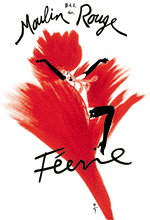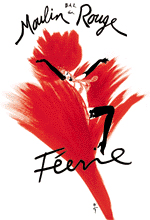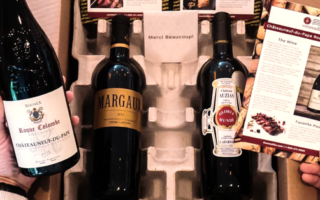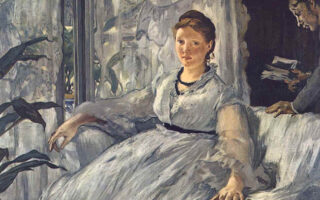Tips for Warding off Crime in Paris

- SUBSCRIBE
- ALREADY SUBSCRIBED?
BECOME A BONJOUR PARIS MEMBER
Gain full access to our collection of over 5,000 articles and bring the City of Light into your life. Just 60 USD per year.
Find out why you should become a member here.
Sign in
Fill in your credentials below.
Bad Ideas And Their Consequences: The Very Short Henri Grazziani Story.
Before the second World War, in France, Corsican gangster Ange Salicetti, member of a powerful underworld family based in Marseilles, was busy building a reputation as a dangerous man. Although low on the ladder at that point and living off the earnings of a few prostitutes, he was known as a man not to be crossed. Curious then that Henri Grazziani, a white-slave trader in the South of France, decided — for reasons best known to himself — to abduct Salicetti’s one true love, Ramona, transport her to South America, and force her to work in a brothel.
History can only wonder what was going through his mind. Did he have any little moments when it occurred to him that his decision, apart from being a bit of a cruel thing to do, may also have been a huge mistake? Did he at any point go visit a shrink and say, ‘Something is worrying me. I can’t quite put my finger on it, but it’s there.’ Did he shrug off the curiously erratic decision and figure that, if Salicetti got really upset about it, he’d pass it off as a practical joke, then offer to introduce him to his sister?
We’ll never know, because Salicetti shot him to pieces about five minutes after getting home and finding out why Ramona hadn’t fixed dinner. What an idiot.
Pigalle: Blood On The Menu
The importance of proper etiquette and diplomacy is well illustrated by the blood-splattered, decade long spot of bother that ensued in a little Pigalle café back in late 1946 when two powerful Corsican families, one based in Paris, one in Marseilles, bound together by drugs (Marseilles the supply; Paris the market), had members of each clan meet up for a chat. One of the Paris guys, Napoleon Corticchiato, known to friends as ‘Little Napoleon’ , was jokingly referred to by one of the Marseilles guys as ‘Shorty’. Rather than respond to this act of churlish immaturity with a sad shake of the head or a tart response, ‘Little Napoleon’ pulled out a revolver and shot his fellow diner to death.
Of course, to refer to somebody as ‘Shorty’ over dinner is without doubt an act of bad table manners, and — within the context of psychotic reasoning — Corticchiato was within his rights to kill him. Unfortunately, to shoot somebody to death over dinner is an even greater transgression of proper etiquette (for one, it makes the soup splash all over the table when the guy’s fac e hits the dish), and as a result, an extremely bloody war ensued between the two families.
e hits the dish), and as a result, an extremely bloody war ensued between the two families.
Get Shorty
The gangsters picked sides for the war that was to ensue. Unfortunately for Little Napoleon, the Marseilles mob was now run by a guy called Ange Salicetti, now at the top of the crime ladder and a renowned war hero (he had shown himself to have a flair for the wholesale slaughter of troops wearing the wrong uniforms). Although accepted by decent society and (living in France), somewhat sympathetic to the church and state-backed idea of killing people based on their fashion choices, he had decided to return to the simpler, more liberated life of killing people regardless of their dress sense. He was now cunning, immaculately turned out, and deadly.
Little Napoleon was caused great stress by the fact that his enemies would now openly refer to him as Shorty. He was caused further distress when, in February of 1946, Ange Salicetti appeared holding a .45 calibre automatic and shot him to death.
Machine Gun Fire On Rue Pigalle
Gangsters are just gangsters, but Paris is after all Paris, and the leader of the Paris mob, one Francois Lucchinacci, was apparently (according to Jay Robert Nash’s excellent ‘World Encyclopedia Of Organized Crime’ – Headline Book Publishing), a university educated and very dapper fellow. So Lucchinacci, in an educated and dapper way, ordered Salicetti’s death.
On 29th July 1946 Lucchinacci’s men walked into the Hollandais Bar on rue Pigalle carrying submachine-guns and let rip. They tore the place apart, killing the innocent bar owner and severely wounding several other people. Salicetti, however, walked out unscathed and decided to have a few weeks in Corsica to get over the shock.
Unfortunately, Lucchinacci and three of his goons needed to get over the shock of missing him like that and decided that Corsica would be a great spot to do it. This time out, they ambushed Salicetti as he strolled to church with his favorite Uncle and his new girlfriend, Jacqueline Dupre. This time Salicetti really was a sitting duck, but despite this, they completely missed him again, killing the Uncle and severely wounding Jacqueline.
Third Time Lucky?
Nope. When the crestfallen but still dapper Lucchinacci and his goons got back to Paris, they were arrested because of a raid on the Minouche Bar that had revealed many weapons. Although a staff member claimed that the weapons were only there for self-defense against drunken customers, he was ignored, possibly because the weapons consisted mainly of hand-grenades and submachine guns. The informer of course was Salicetti, who was angry about how his dates kept turning out.
Of course, the dapper and highly educated Lucchinacci couldn’t be held in jail for long. Using his cunning and resources, he was back on the street a few weeks later. Unfortunately, Salicetti was on the same street, and shot him.
Murder on rue Quentin Bauchart
The next boss, Mathieu Costa, had the reasonable idea of trying to make peace with Salicetti. Salicetti, the war hero, responded to Costa’s civilized and far-sighted gestures by hiring a knife-wielding maniac called ‘Mad Johnny’ to cut his throat. Mad Johnny went to work, attacking Costa in his nightclub on the rue Quentin Bauchart, where he left him bleeding to death. Costa’s funeral was attended by the Corsican underworld of Paris. A floral tribute gave the following touching message: ‘To our dear Boss, knifed by a rat. Rest in Peace, for we will get him for you.’
Ahh.
A couple of days later, ‘Mad Johnny’ met the author of that note and became ‘Dead Johnny’.
Salicetti continued on, torturing his enemies, dodging bullets, having a good time. Then, in 1950 (surprise, surprise), some goon machine-gunned him to death. Since Salicetti’s girlfriend (the already bullet-riddled Jacqueline Dupre), was there at the time, and was untouched, some critics feel that the shooter must have been aiming at her.
The vendetta continued on until as late as 1954 (and beyond), when a respected and peace-loving man, Pierre Cuccari, decided to make the peace once and for all, and was shot to death. The shooter was never found, but experts in organized crime feel that he probably wound up being shot, too; and the guy who shot him also. And so on. And on. And on.


